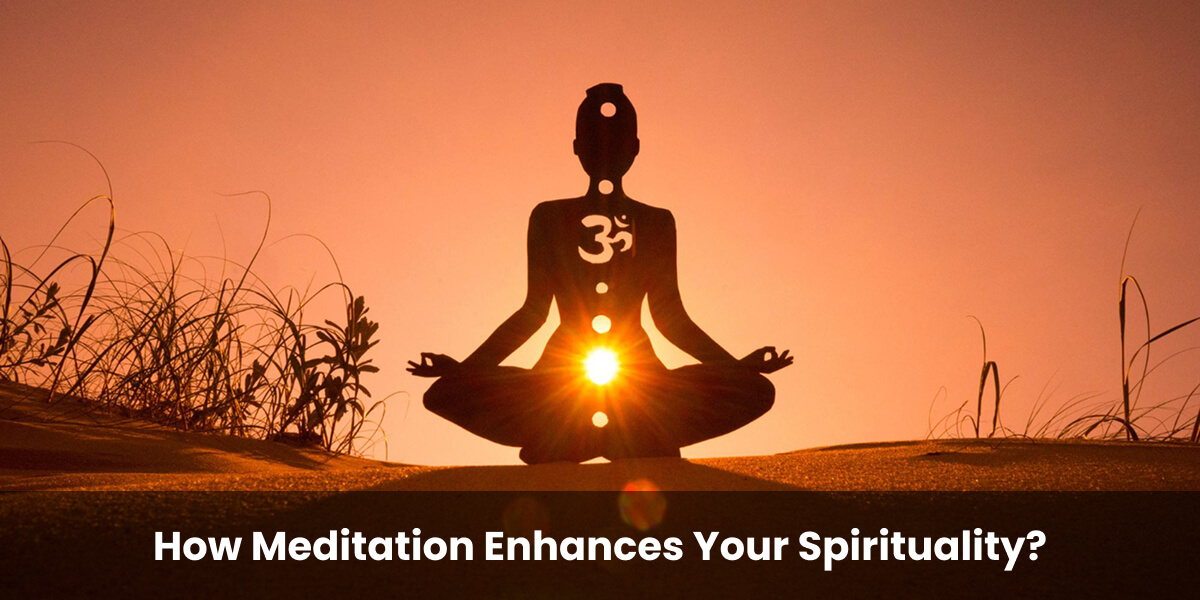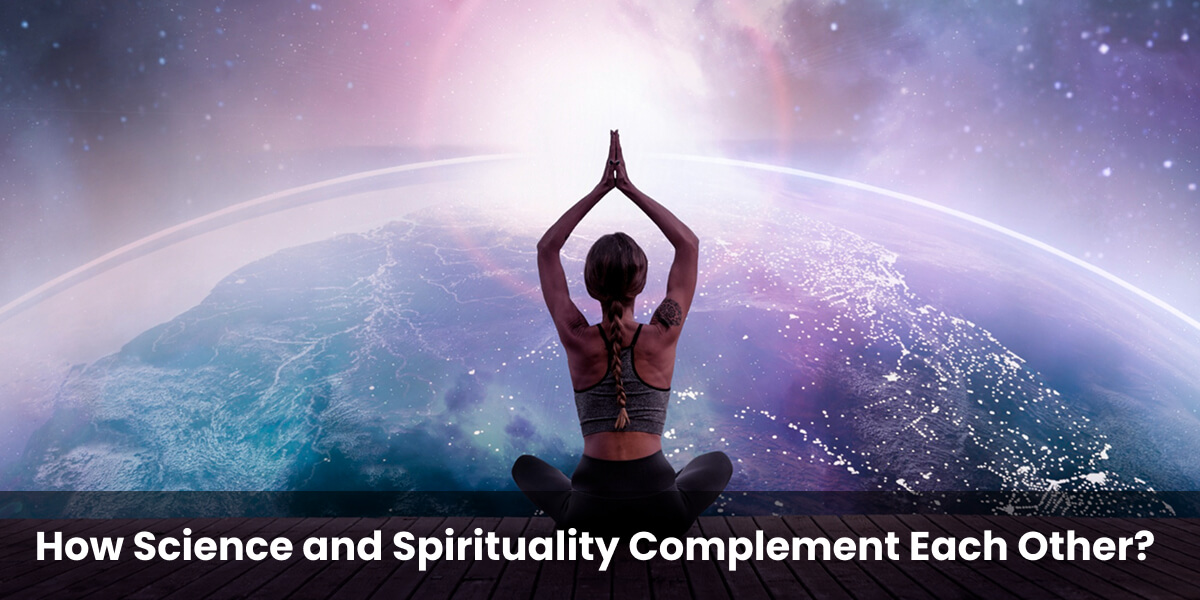Choosing periods of peace and clarity might be difficult in the hectic world of today. On the other hand, living consciously means accepting the turmoil of the current moment. It requires maintaining a sense of calm and intentionality while being totally aware of and involved in what you are doing.
Including mindfulness in our daily life can greatly improve our balance and well-being as we approach 2024. Whether you want to focus better, feel less stressed, or just appreciate the little things in life.
What is Mindful Living?
Obtaining calm and clarity can seem nearly impossible in a world where people are always on the go, surrounded by a nonstop stream of distractions and an abundance of information. However, by bringing ourselves back to the present, mindful living provides a means of navigating through this turbulence. It’s about not letting fears about the past or the future control us and instead choosing to be totally present and involved in the moment.
Making an intentional decision to notice our feelings, ideas, and behaviours objectively is a key component of mindful living. We can develop a stronger sense of connection with ourselves and our environment by doing this, which will result in a more contented and balanced existence. A closer look at what mindful living comprises is as follows:
Related Blog: Mindful Living: All You Need To Know!
Benefits of Mindful Living
1. Reduced Stress and Anxiety
Since it fosters a sense of peace and centring oneself, mindful living has a substantial impact on lowering stress and anxiety. Mindfulness helps people escape the loop of rumination and worry that frequently feeds stress and anxiety by focussing on the here and now. Techniques like conscious observation, meditation, and mindful breathing help you control and monitor your thoughts and feelings without letting them control you. Stress and anxiety levels can drop as a result of this increased acceptance and awareness since it helps create a more balanced viewpoint. Furthermore, mindfulness promotes a moderate attitude to self-compassion, which helps lessen the perfectionism and self-criticism that can exacerbate mental stress.
2. Improved Mental Clarity
By encouraging an attentive and in-the-moment state of mind, mindful living dramatically improves brain clarity. People can calm their minds and enhance their concentration by engaging in techniques like focused reflection, mindful breathing, and meditation. You may teach your brain to better filter out distractions and keep an objective, clear perspective by practicing mindfulness on a regular basis. Better decision-making, problem-solving, and general cognitive function are made possible by this increased focus. Additionally, mindfulness promotes an objective awareness of one’s thoughts and feelings, which aids in recognising and clearing mental clutter. Consequently, you get enhanced comprehension of your cognitive procedures and a more distinct grasp of your objectives and preferences, resulting in more efficient and conscientious actions in your personal and occupational spheres.
3. Enhanced Emotional Regulation
One major advantage of maintaining a mindful lifestyle is having better emotional regulation, which makes it easier and more effective for people to control their emotions. In order to respond more thoughtfully and measuredly as opposed to impulsively, you can learn to become more aware of your emotions as they develop through mindfulness activities like meditation and attentive observation. You may manage your emotions more skilfully by learning more about the patterns and triggers of your emotions by just observing them without passing judgement. Better control over your reactions and a more stable emotional state result from this increased emotional acceptance and awareness. This makes it easier for you to handle difficult circumstances with greater poise and fortitude, which promotes stronger bonds with others and a steadier, happy emotional existence.
18 Ways to Live Mindfully in 2024
It can be difficult to identify times of present and calm in our technologically advanced, hectic environment. On the other hand, living thoughtfully can improve our general wellbeing, help us accept the present, and lessen stress. Here are 18 doable strategies for introducing mindfulness into your day-to-day activities in 2024:
1. Begin Your Day with a Purpose.
Having a defined purpose for the beginning of the day sets the tone for positivity and focus. Spend a few minutes every morning determining your aims and goals so that your activities are in line with your personal priorities. This deliberate strategy increases productivity and motivation, which makes it simpler to stay on course and accomplish your goals. You may encourage a sense of fulfilment and direction throughout your daily activities by starting your day with a purpose
2. Conscious Breathing
Breathing consciously entails giving your breathing conscious attention and concentrating on each inhalation and exhalation. By grounding oneself in the present moment, this technique helps to centre your thoughts, relax the mind, and lessen tension. You can increase your level of relaxation, focus, and general well-being by adopting conscious breathing into your everyday practice.
3. Artificial Detox
Artificial detoxification is the process of cutting off from technology and electronic devices in order to reset and revitalise your mental state. This may entail restricting screen time, taking breaks from social media, or designating particular times for activities unrelated to technology. Artificial detoxification can help you live a life with less stress, less information overload, and more meaningful, present-oriented connections with others. You may improve your general wellbeing and re-establish a healthy relationship with technology by taking regular breaks from screens.
4. Keeping a Gratitude Note
Writing down on a daily basis might help you turn your attention to the good things in your life. This is what it means to keep a gratitude note. This easy exercise improves your general sense of well-being by encouraging regular thought on what makes you happy and fulfilled. You can develop a more positive outlook and a stronger sense of gratitude by routinely recording these moments of appreciation, which will increase your emotional stability and general happiness.
5. Responsible Consumption
Making thoughtful decisions about the goods and resources you use while taking into account their effects on the environment, society, and ethics is known as responsible consumption. This approach entails choosing products that are ethically and sustainably created, cutting waste, and assisting businesses that follow ethical standards. You may improve your personal well-being by making more deliberate and educated decisions, support ethical standards, and help the environment by being mindful of how and what you eat.
6. Walking Meditation
A mindfulness technique called walking meditation combines focused awareness with the physical act of walking. Take note of your surroundings, the feel of your steps, and the rhythm of your gait as you stroll. This exercise strengthens your sense of grounded-ness in the here and now, strengthens your bond with your body, and fosters serenity and clarity. You can incorporate mindfulness into your regular activities by using walking meditation as a dynamic substitute for sat meditation.
7. Mindful Listening
When we listen mindfully, we give the speaker and their message our whole attention, free from bias or outside distractions. It entails listening intently, taking note of the speaker’s tone, emotions, and body language, and deliberately responding. In addition to improving communication and fostering deeper connections and comprehension, this behaviour also demonstrates respect for the speaker. You may improve relationships and lessen miscommunication by engaging in more transparent and compassionate conversations through attentive listening.
8. Meditation Using Your Body Check
To improve self-awareness and calmness during meditation, use your body check to methodically tune into various body regions. After finding a comfortable position to sit or lie down, concentrate on each body part, working your way up to your head beginning with your toes. You can develop a stronger connection to your bodily state, promote relaxation, and ground yourself by observing any sensations, stress, or comfortable spots without passing judgement. By fostering a comprehensive awareness of your body’s state, the body scan approach can help reduce stress, enhance mindfulness, and advance general well-being.
9. Single-Tasking
Instead of multitasking, single-tasking entails concentrating on one task at a time. You improve your focus, productivity, and output quality when you give a single task your whole attention. By minimising errors and reducing cognitive stress, this method encourages more thoughtful and deliberate task execution. By encouraging a more deliberate and involved approach to each work, adopting a single-tasking mind-set can enhance overall productivity and wellbeing.
10. Mindful Breaks
Intentionally scheduled moments throughout the day that are devoted to rest and renewal are known as mindful breaks. You can decompress and refocus by putting work aside and concentrating on deep breathing or easy mindfulness activities. Including these pauses in your routine helps you focus better, avoid burnout, and feel better overall, which enables you to return to work with more clarity and vigour.
11. Mindful Technology Use
Using digital gadgets with intention and consciousness is known as mindful technology use. Setting limits for screen time, avoiding distractions, and utilising technology in ways that support your objectives and values are all part of this discipline. You can lessen information overload, increase productivity, and create deeper offline relationships by being conscious of your tech habits. Utilising technology mindfully fosters a healthy relationship between you and digital tools, which enhances focus and general well-being.
12. Nature Connection
Intentionally interacting with nature to improve wellbeing and mindfulness is known as “nature connection.” Engaging in peaceful strolls in parks, watching animals, or just spending time in nature can all fall under this category. You may lower stress, elevate your mood, and develop a sense of calm and grounding by spending time in natural environments. Regaining mental clarity and developing a greater sense of appreciation for the environment around you are two benefits of connecting with nature that support general health and balance.
13. Mindful Work
Working mindfully entails focussing on one activity at a time, addressing tasks with complete attention and intention, and being present in the moment. You may increase productivity, lower errors, and feel more satisfied with your work by putting an end to distractions and actively participating in it. By doing this, you will develop a stronger bond with your work and produce more deliberate and efficient results.
14. Creative Activities
Painting, writing, or crafting are examples of artistic or imaginative endeavours that you might immerse yourself in to promote self-expression and mindfulness. These exercises promote concentration and flow, enabling you to explore your feelings and thoughts without passing judgement. You may improve your ability to solve problems, lower your stress level, and develop a closer relationship with yourself by making time for creative.
15. Mindful Commute
Whether you’re driving, biking, or taking public transportation, a mindful commute encourages you to use your journey time to practise present-moment mindfulness. Consider it an exercise in mindfulness rather than a chore. To centre yourself, concentrate on the sights, sounds, and fragrances around you. You can also try mindful breathing. This method relieves stress and helps you begin and end your day with more peace and clarity by turning your commute into a time for contemplation or relaxation.
16. Progressive Muscle Relaxation
By methodically tensing and then releasing various muscular groups in your body, you can practise progressive muscle relaxation. Increasing awareness of muscle tightness and encouraging relaxation are two ways that this practice helps to relieve physical tension and lower stress levels. Enhancing body awareness and reaching a deeper state of calm and general well-being can be accomplished by concentrating on the difference between tension and relaxation.
17. Mindful Sleep Preparation
In order to encourage peaceful sleep, creating a relaxing night-time routine is part of mindful sleep preparation. This can involve doing relaxing exercises like reading a book, stretching gently, or deep breathing while avoiding devices and mentally taxing things. You can increase relaxation and raise the calibre of your sleep by concentrating on setting up a calm and comfortable environment before bed.
18. Kindness and Compassion
Being kind and compassionate means having empathy, understanding, and concern for both other people and yourself. Putting these traits into practice entails lending assistance, showing consideration, and handling difficulties with grace. In addition to improving relationships and general well-being, cultivating kindness and compassion also helps you take care of your own mental well-being.
By incorporating these techniques into your everyday practice, you can develop a more balanced and aware lifestyle in 2024. Establish a sustained mindfulness habit by starting with a few practices that you find meaningful and building on them gradually.
Overcoming Challenges in Mindful Living
Developing a mindful lifestyle can be a life-changing experience, but it frequently has its fair amount of difficulties. It might be challenging to stay present in the hectic society of today due to engrained habits, continuous distractions, and hectic lifestyle. However, these challenges are possible with the appropriate state of mind. To help you in overcoming the difficulties of mindful living, consider the following helpful advice:
1. Begin Small
By starting small, you can make your goals or routines more achievable and less daunting by making little, gradual progress towards them. Prioritising manageable, basic tasks helps you become more confident and lays the groundwork for bigger transformations. With this strategy, you may increase your efforts gradually while still making steady progress and keeping yourself motivated.
2. Establish a Routine
Making a consistent daily schedule that includes routines and goals-aligned activities is the first step in establishing a routine. Establishing regular hours for tasks like working, exercising, and unwinding helps you create structure and predictability in your day. This habit increases output, lowers stress levels, and helps you feel more balanced and stable in your life.
3. Be Patient
Being patient is not hurrying or losing patience in order to give yourself the time you need to develop and accomplish your objectives. It entails realising that obstacles are a normal part of the path and that development and transformation take time. Patience builds resilience and keeps you optimistic, which makes it easier and more persistent for you to overcome obstacles.
4. Minimize Distractions
Reducing interruptions and diversions from the workplace in order to foster concentration and efficiency is known as “minimising distractions.” This can involve establishing limits on how much time you spend on technology, setting up your workstation, and assigning specific times for tasks. Actively controlling distractions improves your focus and productivity, resulting in more thoughtful and productive work.
5. Seek Support
Reaching out to people for assistance, direction, or encouragement when required is known as seeking support. This can involve reaching out to experts, friends, or family who can offer guidance, understanding, or helpful support. Recognising that you don’t have to tackle obstacles alone might help you see things from new angles, feel less alone, and be more successful in reaching your objectives and preserving your well-being.
6. Practice Self-Compassion
Being kind and understanding to yourself in the same way that you would a friend in a trying moment is a key component of practicing self-compassion. It entails giving oneself love and support and accepting your flaws and errors without passing judgement. Resilience, a more positive and loving relationship with yourself, and a decrease in self-criticism are all enhanced by embracing self-compassion.
By implementing these tips, you can overcome the common challenges associated with mindful living and create a more present, balanced, and fulfilling life.
FAQs About Mindful Living Tips
Mindful living can bring about numerous benefits, but it’s natural to have questions about how to start and maintain such practices. Here are some frequently asked questions about mindful living tips:
Q1. What are some mindful breathing techniques?
One important mindfulness exercise that promotes mental clarity and improves attention is mindful breathing. Breathing deeply by your nose and letting your abdomen expand entirely is one method of deep breathing that works well. Breathe out slowly through your mouth after holding it for a short while. For a few minutes, repeat this exercise to help you relax and cope with stress. Inhaling for four counts, holding your breath for seven seconds, and gently exhaling for eight seconds is known as 4-7-8 breathing. This technique is also valuable. In particular, this method is helpful for managing anxiety since it helps to calm the nervous system.
A different breathing method is called box breathing. It involves inhaling through your nose for 4 counts, holding it and then exhaling through your mouth for a total of four counts. Both focus and tension levels can be raised using this technique. Breathing through one nostril while closing the other, then alternating them to exhale, is known as alternate nostril breathing. This technique assists in relieving tension and balance the body’s energy. Finally, practicing counting breaths helps improve mindfulness and concentration by having you concentrate on each breath by counting to a predetermined number with each inhale and exhale. For developing a state of mindfulness and tranquilly, these methods are straightforward but effective.
Q2. How does mindful living improve mental health?
Mindfulness helps people in breaking a cycle of unpleasant thoughts and concerns about the past or future by focussing on the present moment. Stress reduction and increased self-awareness are two ways that mindful living significantly enhances mental health. Being conscious can help reduce the symptoms of sadness and anxiety since it promotes acceptance and non-judgmental observation of a person’s feelings and thoughts. meditation stimulates a relaxation response in the body, which lowers the stress hormone levels and promotes a feeling of peace and wellbeing.
Meanwhile, living mindfully increases endurance and emotional control. People who frequently practise mindfulness get the ability to examine their emotions without acting on impulse. This facilitates the development of a more composed and measured reaction to tense circumstances. Furthermore, it has been demonstrated that practicing mindfulness increases the density of grey matter in the brain regions related to memory, learning, and emotional control. These modifications may result in greater problem-solving skills, increased concentration, and improved cognitive capacities, all of which are beneficial to general mental health.
Q3. What are some mindful eating tips?
Being completely present and involved with your food when eating is known as mindful eating, and it can enhance both your entire eating experience and health. Enjoy each bite of your food, taking in its flavours, textures, and fragrances as you eat slowly. To concentrate only on your food, begin by removing all outside distractions by switching off the TV and putting your phone away. Paying attention to your body’s signals of hunger and fullness to ensure that you only eat when you are genuinely hungry and quit when you are satisfied. Take in the process with all of your senses and acknowledge the work that went into making your meal. This routine can enhance digestion and enjoyment while fostering a positive relationship between you and food.
Q4. What are the best books on mindful living?
There are several excellent books on mindful living that offer practical guidance, insights, and inspiration. Here are some of the best:
1. “The Miracle of Mindfulness” by Thich Nhat Hanh
This classic book by the renowned Vietnamese Zen master provides simple yet profound techniques for incorporating mindfulness into daily life. Thich Nhat Hanh’s gentle and insightful writing makes mindfulness accessible to everyone.
2. “Wherever You Go, There You Are” by JonKabat-Zinn
Jon Kabat-Zinn, a pioneer in bringing mindfulness to the West, offers a practical guide to living mindfully. This book is filled with exercises and advice for cultivating mindfulness in everyday activities.
3. “The Art of Happiness” by Dalai Lama and Howard Cutler
In this insightful book, the Dalai Lama shares his wisdom on how to achieve lasting happiness through mindfulness, compassion,
Q5. What are some mindful activities for beginners?
For those new to mindfulness, starting with simple, accessible activities can help build a solid foundation. Here are some mindful activities for beginners:
- Mindful Breathing: Spend a few minutes every day to just focus on your breathing. Breathe in slowly from your mouth and nose, holding your breath for a short while. This is a relaxing and mental-centring activity.
- Body Scan Meditation: From your toes to your head, concentrate on each area of your body while you lie down or comfortably sit. Take note of any tightness, discomfort, or sensations without passing judgement. This practice promotes calm and heightened bodily awareness.
- Mindful Walking: Take a walk and pay attention to the sensation of each step, the movement of your body, and the environment around you. Notice the sights, sounds, and smells, and try to remain fully present during the walk.
- Gratitude Journaling: Each day, write down three things you are grateful for. This simple practice shifts your focus to positive aspects of your life and fosters a greater sense of appreciation and mindfulness.
- Mindful Eating: During meals, take time to savour each bite, paying attention to the flavours, textures, and smells of your food. Eat slowly and without distractions to fully experience your meal.
Conclusion
Adding mindfulness to your daily practice is a terrific approach to improve your general wellbeing and more easily handle the challenges of contemporary living. You can develop a stronger sense of presence, lessen stress, and enhance mental clarity by adopting techniques like mindful eating, breathing, and activity. Being mindful involves learning to live in each moment with awareness and purpose rather than merely trying to run away from the turmoil.
Always keep in mind that consistency is essential when you set out on this path to mindful living. Begin with modest, doable routines and expand them bit by bit. You’ll discover that practicing mindfulness naturally and enticingly becomes a part of your everyday life with time and patience, resulting in increased fulfilment, joy, and balance.









Post a Comment